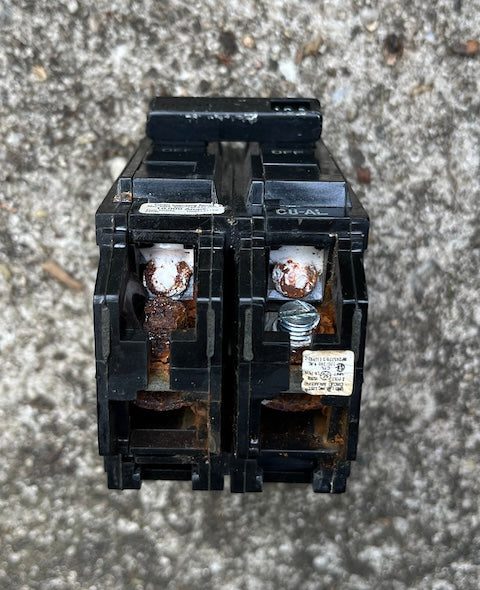
This article first appeared in PS Audio’s Copper Magazine, with whom PMA has a content trading program.
It’s well-known among audiophiles that our systems can sound better or worse from day to day. Sometimes, the better the system, the more inconsistent it can sound.
Over the past year, I’ve made some significant upgrades to my gear, including a new DAC, preamp tubes, cables, and perhaps most importantly, new loudspeakers.
And over the past year, my system had gotten more inconsistent in its sound.
Some days, everything came together and it sounded magical, with wonderful tonality, vocal and instrumental presence, and depth. Other days it just sounded bad – rough, flat, uninvolving, and for lack of a better term, lifeless. I attributed it to two things: one, that my system was more revealing than ever, and two, that I’ve had chronic sinus and allergy problems over the past several years. Some days, my hearing is affected to the point where my right ear actually crackles on low notes.
I’ve been treating the sinus problems with doctors, drugs, irrigation, and steroids and antibiotics when it gets infected. In fact, I’m going for a procedure for my deviated septum in a couple of months, something I should have done decades ago but have been royally procrastinating about. Things have gotten better though, and my ear doesn’t crackle anymore.
The audio issues are another story. Like I said, over the course of the year I’d been systematically (pun intended) upgrading one component or cable at a time, but hadn’t been able to get the system to sound like magic except on rare days. I thought maybe the gear just needed to break in. (I know, there are those who think break-in is nonsense and that it’s just the listener getting acclimated to new gear. I am not one of those people.)
About a month ago our house started to have some weird electrical gremlins. The power would go off and on anywhere from a couple to maybe half a dozen times and this would happen a few times a week. The bad part was that it was on the circuit that our kitchen and my main computer system were connected to. The good part is that it was not on the same the circuit as my audio system. At first we thought it was the microwave or the coffee maker triggering the flickering – but none of our circuit breakers were tripping.
Then one day I noticed that an alarm clock was blinking, signifying a power failure. But…it was on a different circuit than the kitchen and other stuff. And I realized the lights in my basement had also been flickering. One day I tried doing laundry and the washing machine had shut down. It was on a completely different circuit than everything else in the house. Once again, no breakers had been thrown. Why were different circuits in the house misbehaving? What the…?
I called my electrician friend. He checked out the house and found that a couple of wires at the breaker panel and on the outside of the house were not completely tightened onto their ground screws. He tightened them. He checked the main breaker, mainly by physically shaking it while it was live, and said it was good, though he did notice some corrosion on one of the ground terminals. He told me to call PSEG, our power company, and ask them to see if everything on the outside of the house was OK.
A few days went by with no power glitches, so I figured maybe tightening the ground wires had solved the problem. The PSEG guy came and found nothing wrong on the outside, even after sending an 800-amp pulse through the wiring. He also told me that our house was the first one on the block that was connected to the pole, so we had the best-possible outside wiring. As a precaution, he replaced all the connection points on the power lines going into our home, something he said was standard procedure when getting a service call like mine.
For a week, all was good. Then, in true horror movie fashion, the kitchen/computer circuit started flickering again. A few minutes later it died completely, which hadn’t happened before. Now it was a major problem.
In a panic I called the electrician again. After coming over as early as he could, a couple of days later, he discovered that the problem was the main circuit breaker. He removed it from the breaker panel and saw that most of the connection points were seriously rusted. I think a picture is worth a thousand words here:

Water was getting into the main breaker from the outside. An examination of the conduit on the side of the house revealed that there had been a very slow leak at the point where the conduit was joined to another section. The sealer material had deteriorated. When he removed the panel to the outside meter box, sure enough, there was a drop of water hanging off the internal wiring. This did nothing to calm my mood amid visions of the house going up in flames.
The electrician installed a new breaker and re-sealed the conduit. Problem solved, as Frank the Fixer would say! No need to call in the Ghostbusters. So, what had happened is that the main breaker had been gradually corroding over the course of decades, eventually getting to the point where the electricity to my house was intermittent, and then ultimately the power to one of the circuits failed completely. The power to my home…and audio system…had been flaky for who knows how long.
You can probably guess where this is going.
Since audiophiles know that everything can possibly make a difference, it occurred to me that maybe the fluctuating sound of my audio system over the past year had been the result of inconsistent power. Sure, I had a power conditioner in place, but if it had been getting bad power there was only so much it could do. And if the power was so bad it could make microwaves and washing machines go haywire, well…
So, a few days after the electrical repairs (it had been a hectic week) I turned on my audio system, with great expectations.
Within five seconds I could tell that it sounded different.
There was more detail and definition. I heard more clarity and a bigger soundstage. When listening to “Somethin Else” by Cannonball Adderley, I could clearly hear his “fluttering” fingering on his saxophone during a solo, something I had never noticed before.
There was only one thing.
I didn’t like the way it sounded.
You know how when you change something in your system and you don’t like it, the first thing you want to do is lie to yourself and convince yourself it’s “better?” That was me. The system now sounded thin, without body. Trumpets were uncomfortable to listen to. My heart sank.
I thought…maybe the breaker needs to break in? That made no sense. Even if such a thing could be true, the breaker had had AC coursing through it for days.
I recalled the Stereophile article where Michael Fremer had some electrical work done to the outside of his house and the sound of his system was ruined. Was mine? Was I doomed to now-consistent, but consistently bad sound? For a few minutes I contemplated calling the electrician and asking if he could install a different breaker or try different ones, then realized such a request would cost hundreds of dollars, take a lot of time, and result in my electrician thinking I was crazy and never speaking to me again. (Maybe some people reading this article will be convinced I’m nuts. Hey, I call ’em as I hear ’em.)
What could I do? My first thought was to change cables and use them as a tonal band-aid. I’ve heard from people who I respect that one can choose separate sets of speaker cables optimized for the bass and for the highs, but where would I even start? It seemed like a rabbit hole of trial and error, and I wanted good sound now. I didn’t feel like using some kind of EQ would be the answer. Tube rolling? My preamp is very hard on tubes and it took decades to find the ones that worked and sounded best, so, no.
For a few days I obsessively ran all the possibilities through my mind. Cables, isolation feet, a new power conditioner, tube rolling, speaker positioning…no, I didn’t think that was the solution, as I had spent about six months getting my new speakers into what I considered the optimal placement.
An idea flashed into my head. At AXPONA, I had asked some of the guys if they had an opinion on bi-wiring loudspeakers versus using a single wire and a jumper between the bi-wire terminals. A couple of months previously, out of curiosity, I had gone down the internet rabbit hole of opinions about bi- versus single-wiring, and found nothing definitive. The consensus said you basically have to try it.
So I changed my speakers from bi-wired to single-wired.
The sound changed.
It wasn’t quite as detailed or spacious, but…the tonal balance was better. Instruments and vocals had more weight and body. The trumpets didn’t screech. It was warm and inviting again.
I kept going back and forth between single- and bi-wiring. I played the system for days in both configurations. Finally, although knowing I was going to lose a little resolution, I settled on single wiring. With single wiring the system was fun to listen to again.
I don’t know why. Maybe because the impedance of the cabling is less when bi-wired. Maybe the speakers “like” when the signal goes through the crossover via a single wire, and then to the drivers. (Look, I know a little something about audio, but when I look at schematics I get confused, same as if I’m looking at maps.) Maybe I should have tried single-wiring when I first got the speakers. Maybe I like the sound of back EMF and intermodulation distortion. (Nah, I don’t think so.) And maybe another person would prefer the sound of my system bi-wired, thinking it’s too dull the other way. Also, I’m sure bi- versus single-wiring is extremely amplifier-, cable-, and loudspeaker-dependent, so talk about a case of YMMV…
And why on Earth would changing a circuit breaker result in having to single-wire my speakers to fix a change in the sound?
Well, I just don’t know.
At the end of the day, I’m just glad the story has a happy ending – me being happy with the sound of my system again.
Sometimes weird stuff happens when you’re an audiophile.
Postscript: By sheer coincidence, the day after I finished this article Paul McGowan published a Paul’s Post column titled, “It’s Not That Simple.” It touched upon the very same thing I’m talking about in the second half of this article.
Header image courtesy of Pixabay.com/TheVisualEngineer.
Republished by permission. For more articles like this, visit Copper Magazine.
















Leave a Reply